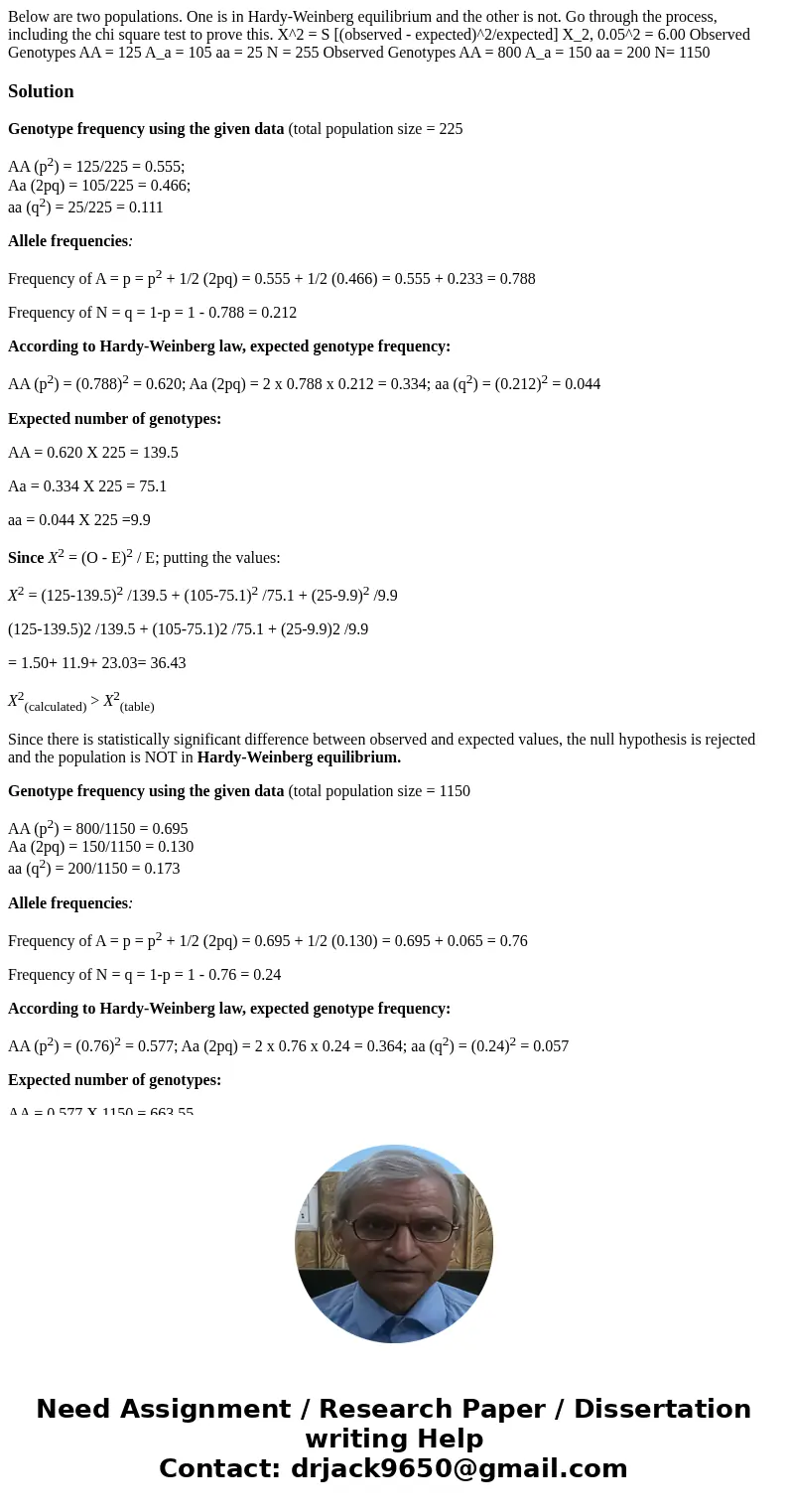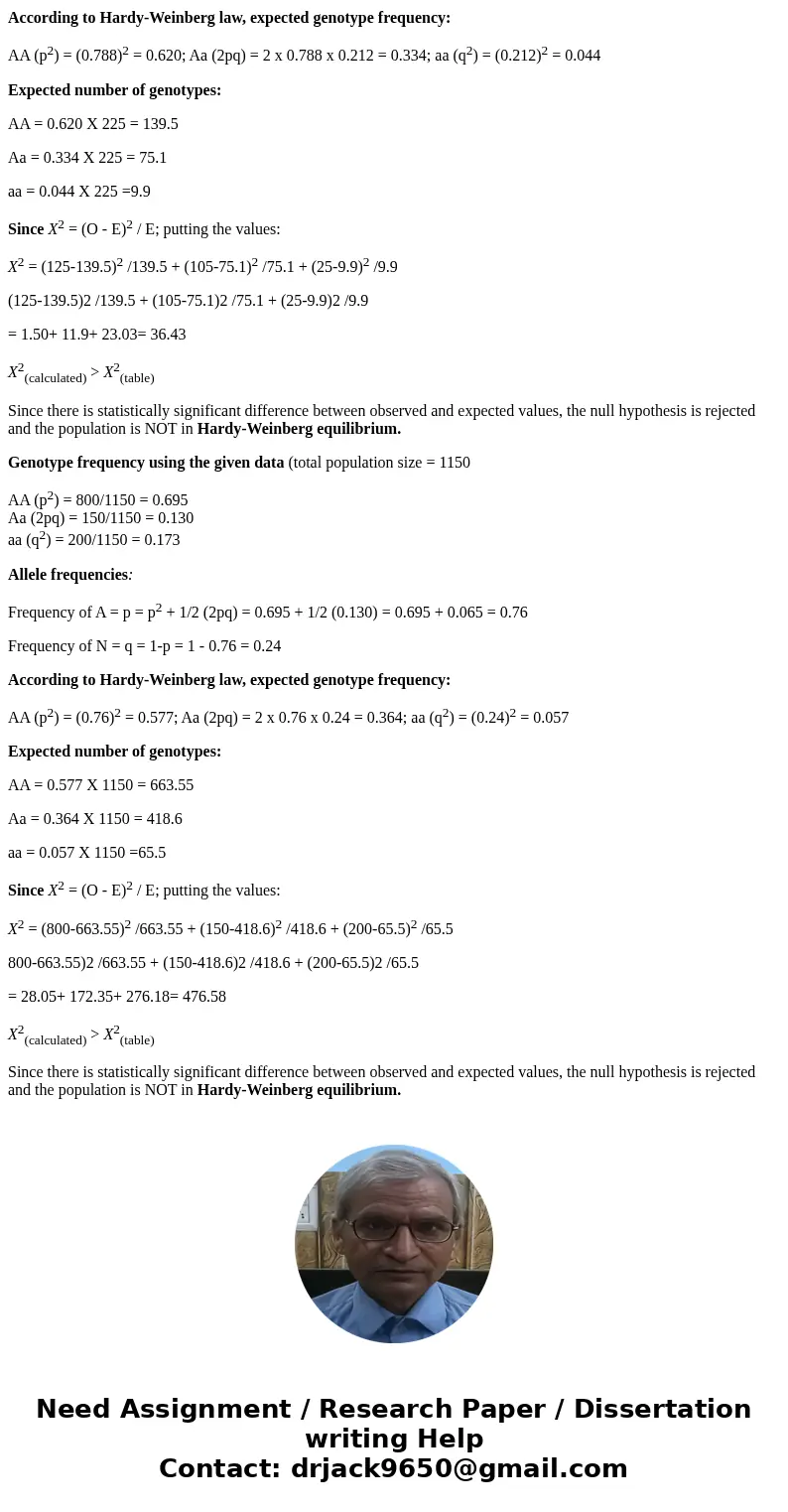Below are two populations One is in HardyWeinberg equilibriu
Solution
Genotype frequency using the given data (total population size = 225
AA (p2) = 125/225 = 0.555;
Aa (2pq) = 105/225 = 0.466;
aa (q2) = 25/225 = 0.111
Allele frequencies:
Frequency of A = p = p2 + 1/2 (2pq) = 0.555 + 1/2 (0.466) = 0.555 + 0.233 = 0.788
Frequency of N = q = 1-p = 1 - 0.788 = 0.212
According to Hardy-Weinberg law, expected genotype frequency:
AA (p2) = (0.788)2 = 0.620; Aa (2pq) = 2 x 0.788 x 0.212 = 0.334; aa (q2) = (0.212)2 = 0.044
Expected number of genotypes:
AA = 0.620 X 225 = 139.5
Aa = 0.334 X 225 = 75.1
aa = 0.044 X 225 =9.9
Since X2 = (O - E)2 / E; putting the values:
X2 = (125-139.5)2 /139.5 + (105-75.1)2 /75.1 + (25-9.9)2 /9.9
(125-139.5)2 /139.5 + (105-75.1)2 /75.1 + (25-9.9)2 /9.9
= 1.50+ 11.9+ 23.03= 36.43
X2(calculated) > X2(table)
Since there is statistically significant difference between observed and expected values, the null hypothesis is rejected and the population is NOT in Hardy-Weinberg equilibrium.
Genotype frequency using the given data (total population size = 1150
AA (p2) = 800/1150 = 0.695
Aa (2pq) = 150/1150 = 0.130
aa (q2) = 200/1150 = 0.173
Allele frequencies:
Frequency of A = p = p2 + 1/2 (2pq) = 0.695 + 1/2 (0.130) = 0.695 + 0.065 = 0.76
Frequency of N = q = 1-p = 1 - 0.76 = 0.24
According to Hardy-Weinberg law, expected genotype frequency:
AA (p2) = (0.76)2 = 0.577; Aa (2pq) = 2 x 0.76 x 0.24 = 0.364; aa (q2) = (0.24)2 = 0.057
Expected number of genotypes:
AA = 0.577 X 1150 = 663.55
Aa = 0.364 X 1150 = 418.6
aa = 0.057 X 1150 =65.5
Since X2 = (O - E)2 / E; putting the values:
X2 = (800-663.55)2 /663.55 + (150-418.6)2 /418.6 + (200-65.5)2 /65.5
800-663.55)2 /663.55 + (150-418.6)2 /418.6 + (200-65.5)2 /65.5
= 28.05+ 172.35+ 276.18= 476.58
X2(calculated) > X2(table)
Since there is statistically significant difference between observed and expected values, the null hypothesis is rejected and the population is NOT in Hardy-Weinberg equilibrium.


 Homework Sourse
Homework Sourse